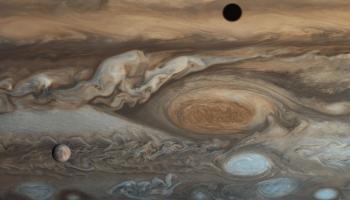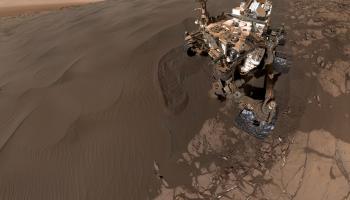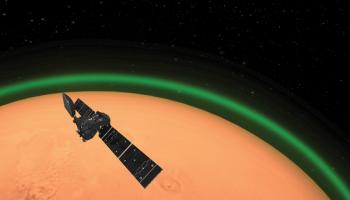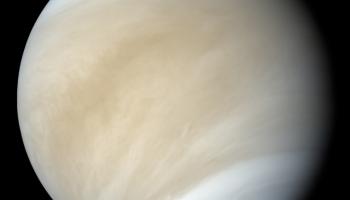Things are kicking into a higher gear in our MAJIS lab. A team of scientists and engineers from the Royal Belgian Institute for Space Aeronomy has been working for some time on the development of a characterisation facility for one of two detectors of a space instrument called MAJIS, planned to be launched on board the JUICE spacecraft to the Jupiter’s system in 2022.
Good news, you don't have to sit still this summer! The UGent Armand Pien public observatory is reopening its doors to the public today, and has prepared a lot of fresh Mars science for you :
Vega Flight VV16 is postponed to August, due to persistent unfavourable winds at high altitudes above Kourou (French Guyana, South America). Aboard the Vega launcher, 53 satellites, including two Belgian CubeSats, PICASSO and SIMBA, are waiting to be lifted into orbit.
The NOMAD instrument, developed at the Royal Belgian Institute for Space Aeronomy and currently in orbit around Mars on board ESA's ExoMars Trace Gas Orbiter, has detected a unique green glow of oxygen in the atmosphere surrounding the red planet (around 80 km altitude). This emission gives its characteristic colour to the terrestrial polar aurora and airglow, but was never observed before in other planetary atmospheres outside of the Earth.
The Royal Belgian Institute for Space Aeronomy is working on a future ESA mission to Venus, called EnVision. The spacecraft is currently scheduled for launch in 2032, and its aim will be to investigate the geological characteristics and activity of Venus, as well as their influence on the planet’s atmosphere. This could help us understand why Venus and Earth evolved so differently.
Scientists from the Royal Belgian Institute for Space Aeronomy (BIRA-IASB), in collaboration with the Royal Netherlands Meteorological Institute (KNMI) and the European Space Agency (ESA) have determined the extent to which the COVID-19 crisis has had an impact on air quality. The results were published on May 8, 2020, in the journal Geophysical Research Letters.







